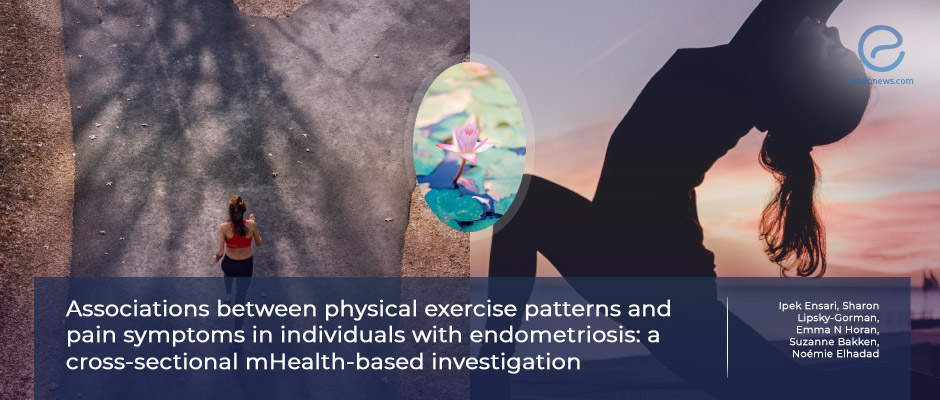Start exercising for pain relief
Aug 30, 2022
Endometriosis-related pain symptoms fade with regular exercise
Key Points
Highlights:
- The study questioned the effect of a basic homemade exercise protocol to fight endometriosis-related pain.
Importance:
- A phone application traced exercise routine may help with endometriosis pain even on the same day of exercise.
What's done here:
- The data has been collected from a self-reports phone application program called Phendo that patients enter their surgery details, exercise, and pain cycles.
- Data between November 2016 and April 2020 have been taken for analysis.
- Day level of pain through application-based questions addressing the place and level of pain, daily and weekly exercise frequency, and pain changes followed by exercise have been documented.
Key Results:
- In total 90 382 days of self-tracking data from 1009 women with endometriosis have been analyzed
- Previous-day exercise was associated with lessened pain levels who regularly apply exercise at least three times per week.
- When the excercise frequency was less than 2 times a week, the pain was higher on the day after exercise.
Limitations:
- While it is the first study that analysis day-by-day pain response to exercise it is a limitation that the type of exercise that should be suggested and the effect of concomitant factors such as supplement or hormonal therapy use has not been analyzed.
Lay Summary
Physical exercises have always been suggested for chronic pain-related diseases as well as endometriosis.
However, the effect of exercise and the frequency that is effective on pain relief is unknown.
In the study conducted by Ipek Ensari et al, a self-reported phone application program was used to analyze the daily bases symptoms and their changes after exercise were studied. The data was collected from a self-reports phone application program called Phendo where patients enter their surgery details, exercise, and pain cycles.
Data between November 2016 and April 2020 have been taken for analysis. Day level of pain through application-based questions addressing the place and level of pain, daily and weekly exercise frequency, and pain changes followed by exercise have been documented. In total 90 382 days of self-tracking data from 1009 women with endometriosis have been analyzed.
The previous-day exercise was associated with less pain in patients who regularly apply exercise at least three times per week. When the frequency of excercise was less than 2 times a week, the pain was higher on the day after exercise. While the variants that might also affect the efficiency of exercise such as disease stage, the medication used, or concomitant diseases have not been fully investigated, it is a good start for questioning the level, timing, and type of exercise that should be suggested to women with endometriosis.
The details of the paper can be read at BMJ Open.
Research Source: https://pubmed.ncbi.nlm.nih.gov/35851021/
exercise phone application endometriosis

